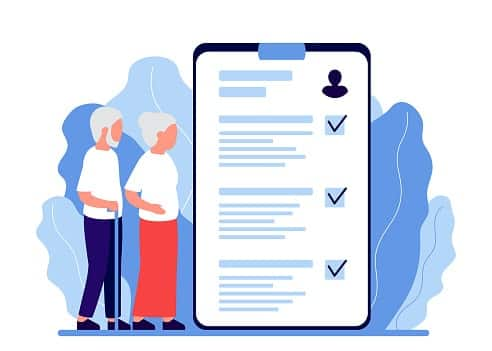What are ACA plan subsidies?
There are two types of subsidies to help low- and moderate-income people afford health insurance in the ACA marketplace:
- One subsidy helps reduce premiums.
- The other subsidy helps reduce out-of-pocket expenses, such as deductibles and copayments.
You can only get these subsidies if you buy health insurance policies sold through the insurance marketplace. You can find links to your state's ACA marketplace at Healthcare.gov. Some states run their own marketplaces, while the federal government runs many others. Healthcare.gov will transport you to the correct marketplace.
Private insurance companies offer marketplace policies, but they must meet ACA standards. These plans:
- Can’t reject you
- Can’t charge more because of pre-existing health conditions
- Must cover 10 essential health benefits, including hospitalizations, outpatient care, mental health and prescription drugs
- Must have out-of-pocket spending limits for individual and family plans
You usually have several health plan options for marketplace plans. ACA plans come in four tiers:
- Bronze plans tend to have the lowest premiums but the highest deductibles and out-of-pocket costs.
- Silver plans usually have slightly higher premiums but lower deductibles than Bronze plans.
- Gold and Platinum plans generally have the highest premiums but the lowest out-of-pocket costs.
Find out more about ACA plan metal tiers.
Eligibility for both types of subsidies is based on your income. The premium subsidy is technically a tax credit that you receive in advance to help you pay your premiums. The subsidy goes directly to the insurance company and you pay the difference.
If your income ends up being higher than expected by the end of the year, you may need to pay back some of the subsidy when you file your income tax return the following spring. If your income ends up being lower than expected when you applied for the policy, you may get back some money as a refund.
Who is eligible for ACA premium subsidies?
You are eligible for an ACA premium subsidy if your income falls between 100% and 400% of the federal poverty level In 2025, federal poverty levels are as follows. For families of 9 or more, add $5,500 for each additional person.
| Family size | 2025 federal poverty level (100%) | 20-25 federal poverty level (400%) |
|---|---|---|
| Individuals | $15,650 | $60,240 |
| Family of 2 | $21,150 | $81,760 |
| Family of 3 | $26,650 | $103,280 |
| Family of 4 | $32,150 | $124,800 |
| Family of 5 | $37,650 | $146,320 |
| Family of 6 | $43,150 | $167,840 |
| Family of 7 | $48,650 | $189,360 |
| Family of 8 | $54,150 | $210,880 |
Also, you may qualify for Medicaid coverage if your income is below 100% of the federal poverty level, depending on your state’s income rules.
You need to estimate your income for the year when you buy a marketplace policy to figure out the subsidy’s size. The subsidy calculation is complicated, but it’s designed so that people pay no more than 2% to 10% of their income in premiums for a Silver-level plan on the ACA marketplace. The lower your income, the larger your subsidy. The government pays the subsidy, and you pay the remainder of the cost.
The Kaiser Family Foundation has a calculator that can help estimate your subsidy. The ACA marketplace websites have calculators to show exactly how much you'd have to pay for the policies available in your area after the subsidy.
How much do you save with ACA premium subsidies?
As an example, a family of four living in Minneapolis (Hennepin County) with an annual income of $55,000 is eligible for a premium tax credit of $953 a month. With that subsidy, a silver plan will cost about $50 a month, compared to $1,004 a month without the subsidy.
The subsidy calculation is based on the price of the second-lowest-cost Silver plan in your area, but you can use the subsidy to buy any plan on the marketplace. The size of the subsidy remains the same, even though the premiums for other plans are different.
If you buy a Bronze plan, for example, your premiums will be even less or covered entirely. The family mention above could get a bronze plan for no monthly cost at all.
Karen Pollitz, a senior fellow at the Kaiser Family Foundation, says gauging your next year’s income can be difficult.
"When they apply, people should make the best estimate they can justify and then if circumstances change during the year, they can and should return to the marketplace to adjust their premium subsidy -- claiming more if income has dropped or rolling back subsidies if income has increased,” Pollitz says.
Who is eligible for ACA cost-sharing subsidies?
People with an income below 250% of the federal poverty level can qualify for additional cost-sharing reductions, which reduce deductibles and other out-of-pocket expenses. In 2025, 250% of PFL is:
- For an individual: $37,650
- For a family of four: $78,000
When you apply for a Marketplace plan, you will find out whether you qualify for additional cost-sharing reductions.
How much do you save with ACA cost-sharing subsidies?
How much you will save with ACA cost-sharing subsidies depends on your income. To get these subsidies, you must purchase a Silver plan, and your out-of-pocket maximum will be reduced as follows (note that the out-of-pocket max for all plans is $9,200 for individuals and $18,400 for families).
- At 100% to 200% of FPL: $3,050 individual, $6,100 family
- At 200% to 250% of FPL: $7,350 individual, $14,700 family
Health insurance finder tool

COBRA
Learn more about COBRA
How much is your annual household income?
How many members are in your household?
Medicare
Medicare costs vary depending on which option you choose.
Learn more about Medicare costs.
Medicaid

Parent's employer-sponsored health insurance

Spouse's employer-sponsored health insurance

Employer-sponsored health insurance

Preferred-provider Organization (PPOs)
Preferred-provider organization (PPOs) plans are the most common type of
employer-based health plan. PPOs have higher premiums than HMOs and HDHPs, but
those added costs offer you flexibility. A PPO allows you to get care anywhere
and without primary care provider referrals. You may have to pay more to get
out-of-network care, but a PPO will pick up a portion of the costs.
Find out more about the differences between plansHealth maintenance organization (HMO)
Health maintenance organization (HMO) plans have lower premiums than PPOs.
However, HMOs have more restrictions. HMOs don't allow you to get care outside
of your provider network. If you get out-of-network care, you'll likely have to
pay for all of it. HMOs also require you to get primary care provider referrals
to see specialists.
Find out more about the differences between plansHigh-deductible health plans (HDHPs)
High-deductible health plans (HDHPs) have become more common as employers look
to reduce their health costs. HDHPs have lower premiums than PPOs and HMOs, but
much higher deductibles. A deductible is what you have to pay for health care
services before your health plan chips in money. Once you reach your deductible,
the health plan pays a portion and you pay your share, which is called
coinsurance.
Find out more about the differences between plansExclusive provider organization (EPO)
Exclusive provider organization (EPO) plans offer the flexibility of a PPO with
the restricted network found in an HMO. EPOs don't require that members get a
referral to see a specialist. In that way, it's similar to a PPO. However, an
EPO requires in-network care, which is like an HMO.
Find out more about the differences between plans
Learn more about individual insurance plans
How to find plans with health insurance subsidies
The best way to get a plan that’s eligible for subsidies is to go to the ACA insurance marketplace.
You'll enter your income information and see all of the plans available in your area. You also can compare premiums as well as your actual cost after the subsidies are applied.
You can only shop for policies on the state marketplace at certain times. In most states, you can buy coverage or switch to a different policy during open enrollment every year, which runs from Nov. 1 to Dec. 15 for coverage to begin on Jan. 1. (Some states that run their own marketplaces have extended deadlines.)
You can also shop for policies on the state marketplace at other times if you qualify for a special enrollment period. You may become eligible for a special enrollment period if you:
- Lose your job (and lose your employer's health insurance)
- Move
- Get married
- Get divorced
- Have a baby
- Adopt a child
- Experience other eligible life changes
You generally have 60 days after the eligible event to get coverage on the marketplace. See Special Enrollment Periods for more information.
Sources:
- Healthcare.gov. "Federal Poverty Levels." Accessed August 2025
- KFF. "Explaining Healthcare Reform: Questions About Health Insurance Subsidies." Accessed August 2025












